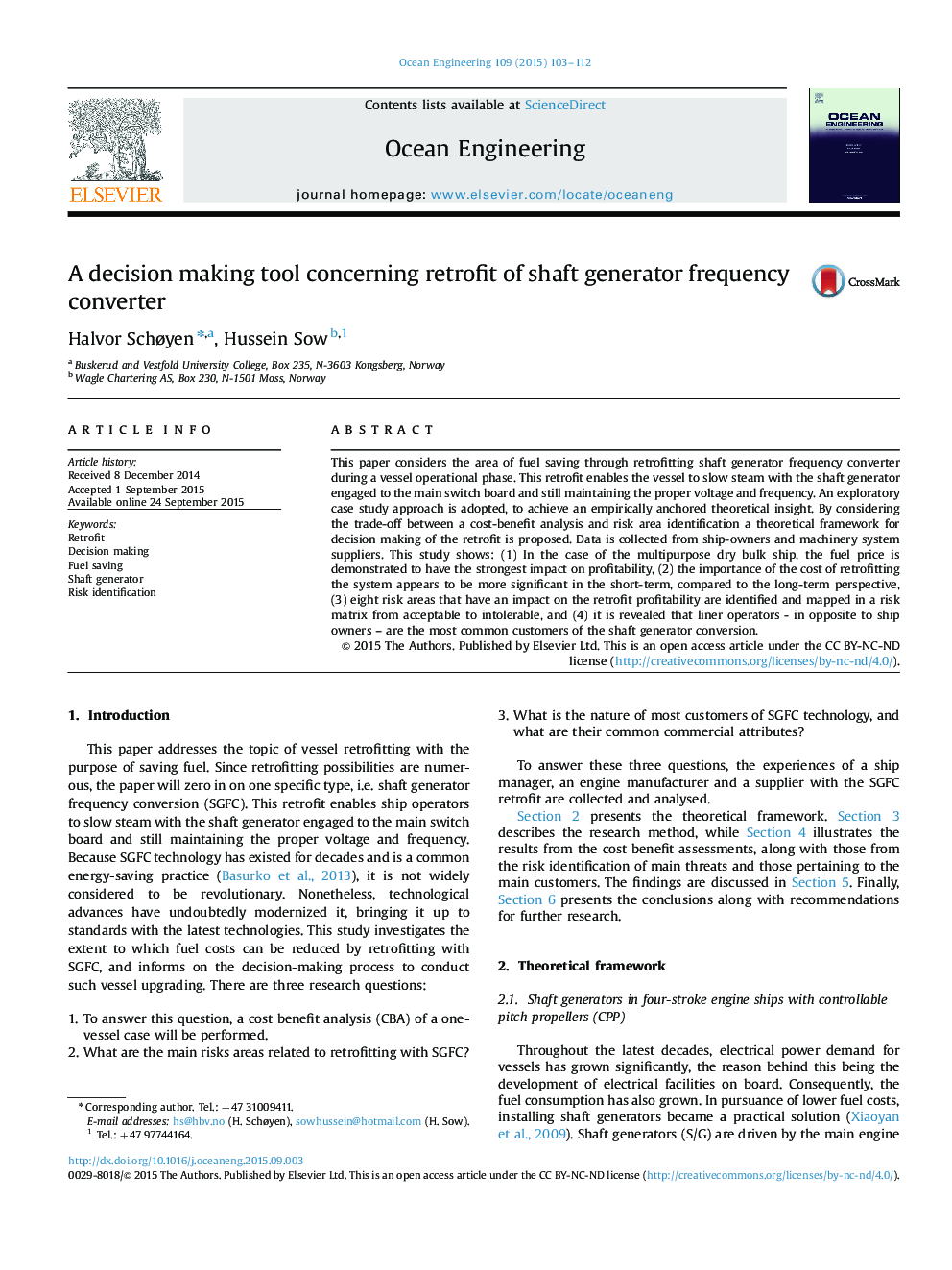| Article ID | Journal | Published Year | Pages | File Type |
|---|---|---|---|---|
| 8065117 | Ocean Engineering | 2015 | 10 Pages |
Abstract
This paper considers the area of fuel saving through retrofitting shaft generator frequency converter during a vessel operational phase. This retrofit enables the vessel to slow steam with the shaft generator engaged to the main switch board and still maintaining the proper voltage and frequency. An exploratory case study approach is adopted, to achieve an empirically anchored theoretical insight. By considering the trade-off between a cost-benefit analysis and risk area identification a theoretical framework for decision making of the retrofit is proposed. Data is collected from ship-owners and machinery system suppliers. This study shows: (1) In the case of the multipurpose dry bulk ship, the fuel price is demonstrated to have the strongest impact on profitability, (2) the importance of the cost of retrofitting the system appears to be more significant in the short-term, compared to the long-term perspective, (3) eight risk areas that have an impact on the retrofit profitability are identified and mapped in a risk matrix from acceptable to intolerable, and (4) it is revealed that liner operators - in opposite to ship owners - are the most common customers of the shaft generator conversion.
Related Topics
Physical Sciences and Engineering
Engineering
Ocean Engineering
Authors
Halvor Schøyen, Hussein Sow,
